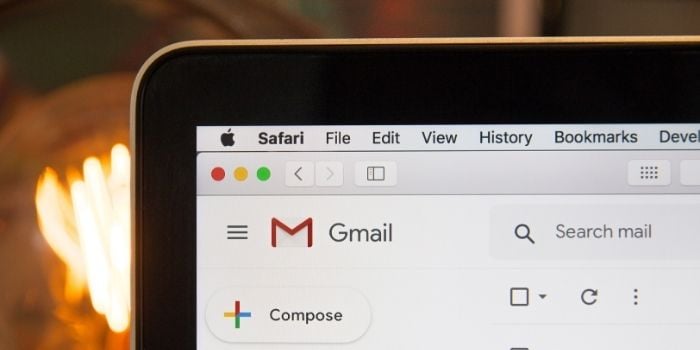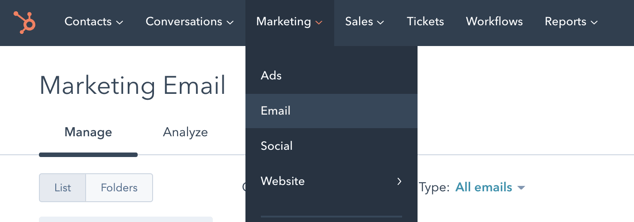
This year, around 3.9 billion people are using email on a daily basis. So it's no wonder that organizations rely on inboxes to communicate with their audiences. But not every email is a "marketing message" that is trying to advertise, sell, or promote something.
Sometimes emails are critical notifications about contracts, purchases, or accounts. These messages, known as "transactional emails," require special attention and treatment to ensure they are delivered and not blocked by spam filters. You likely receive transactional emails every day. For example:
- When you click a "forgot password" button and receive an email with a reset link
- When you purchase something online and get a confirmation receipt
- When you receive information about changes at a partner company
Failing to deliver or receive this type of information could result in negative consequences. That’s why it is essential your organization is sending transactional messages correctly. Because developers are often involved in setting up automated email sends via APIs, we've put together this article to help you understand more about the topic. Here is what we will cover:
- How to send transactional emails with Hubspot (via the UI and APIs)
- Why transactional emails require a dedicated IP
- What happens if you send marketing information in transactional emails
Let's dive in...
How to send transactional emails with HubSpot
In this section, we are going to look at a few of the ways you can leverage transactional emails within HubSpot. Please note that in order to send transactional email from HubSpot you will need to purchase the transactional email add-on.
1) Via your HubSpot account
Once you log into your HubSpot account, you can create and send transactional emails via the regular email tool. It's simple and efficient. If you're familiar with creating marketing emails in HubSpot then this won't be anything new.
From the main menu, select “Marketing” then Email”.

Create the email you would like to send. Then on the email settings tab, make sure you select “transactional” in the subscription type dropdown menu as outlined in this article.
Once created, this type of transactional email can be sent to a list or saved for use within workflows. You'll also be able to view reports in the email performance dashboard. It's important to track the engagement of your transactional emails just like you would with marketing emails.
This method is ideal for those who need to:
- Send out a one-time notification to a list of contacts about changes in terms & conditions, or legal and contractual information, etc.
- Send customers information relating to their subscriptions/contracts using workflows.
In addition to sending transactional emails with your HubSpot account, you can also do this programmatically using the "Transactional Email API". There are two components to this API including the SMTP and Single Send APIs. Let’s look at those next.
2) Via SMTP API
The SMTP API gives you total control. You can create emails and trigger sends through HubSpot's servers externally, then view performance directly within HubSpot. The SMTP API also gives you the unique ability to add attachments, including PDFs, and send emails to individuals without creating contacts within HubSpot, which can be useful for things like password resets.
The SMTP API is based on tokens. Those tokens contain a username and password to connect to the HubSpot SMTP servers. You can generate tokens using the API or from within your HubSpot account. Once you begin sending emails via the SMTP API, you can report on the performance of your emails by navigating to "Settings > Marketing > Email" and clicking on the "SMTP" tab. From here, you will see all of your tokens, and you can click on them to view performance.
The SMTP API is useful for those wanting to:
- Retain complete and total control of their email HTML and send logic.
- Dictate whether or not the recipient should be created as a contact within Hubspot.
- Analyze the performance of transactional emails sent via their external applications and/or eCommerce systems.
3) Via Single Send API
The Single Send API offers the best of both worlds when sending transactional email from HubSpot. You can create emails using HubSpot's powerful design editor and smart content features, then send those emails programmatically as required. What's more, you can dynamically inject data into the body of those emails that doesn't need to be stored in your HubSpot account.
The Single Send API is useful for in the following scenarios:
- Your content marketing team wishes to retain control over the email templates and leverage tools like smart content and personalization.
- You want to include data in the email body that doesn't have to be saved as a contact property in HubSpot.
- You want a way to trigger email sends using the API from your external applications and systems.
Why transactional emails require a dedicated IP
It is essential to send transactional emails correctly to ensure the highest possible chance of delivery. This requires using a dedicated IP address that is not used for marketing emails. Why?
Imagine you rented a car while on vacation. You drive to a nearby beach but are refused entry because the license plate has been flagged. It turns out a previous driver wasn't particularly safe, and now authorities are on the lookout for the vehicle. Bummer!
When it comes to email deliverability, inbox providers like Gmail and Outlook don't want to take any chances with spam. So they look for the slightest reason to refuse entry to incoming emails. If you send from an IP address that has been used for marketing purposes, your transactional emails are more likely to be blocked as spam.
To avoid this, HubSpot uses a separate IP for your transactional emails that is completely clean of all blemishes. This ensures that you're not punished for potential spam complaints and hard bounces associated with your day to day marketing email activity.
What happens if you send marketing information via transactional emails
So why not send all messages as "transactional emails" to improve deliverability? Truth be told, you could do this for a while - until you get caught. It is kind of like driving down the wrong side of the road to get past a traffic jam. It's not a great idea.
Eventually, someone will flag your messages as spam. This will have an EXTREMELY negative impact on your sending reputation and impact both your marketing and transactional emails. So don't take the risk!
There you have it! Hopefully, this overview of transactional emails and how you can send them from HubSpot will help you meet your organization's needs. Thanks for reading.
